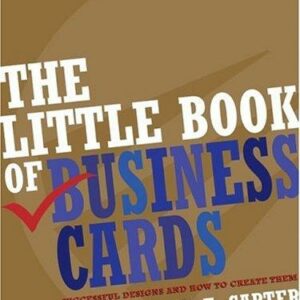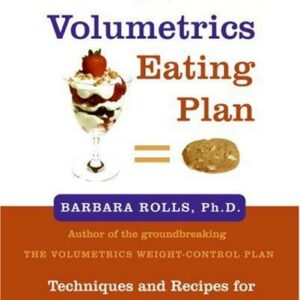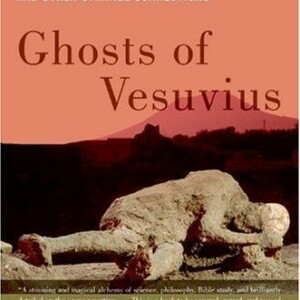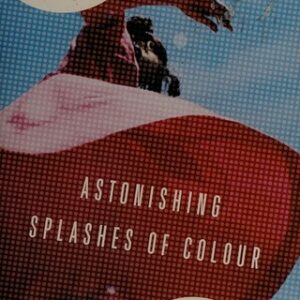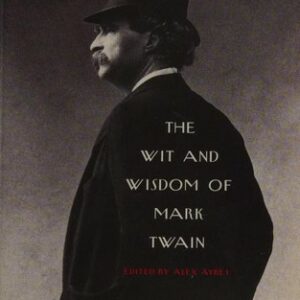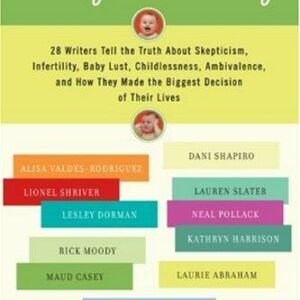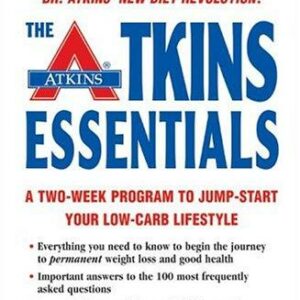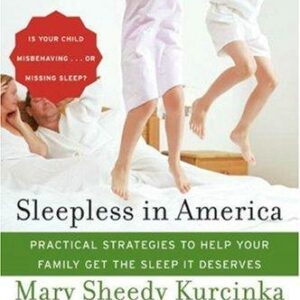Happy Together
$17.00
| Title | Range | Discount |
|---|---|---|
| Trade Discount | 5 + | 25% |
- Description
- Additional information
Description
How do you get to “happily ever after”?
In fairy tales, lasting love just happens. But in real life, healthy habits are what build happiness over the long haul. Happy Together, written by positive psychology experts and husband-and-wife team Suzann Pileggi Pawelski and James O. Pawelski, is the first book on using the principles of positive psychology to create thriving romantic relationships. Combining extensive scientific research and real-life examples, this book will help you find and feed the good in yourself and your partner. You will learn to develop key habits for building and sustaining long-term love by:
• Promoting a healthy passion
• Prioritizing positive emotions
• Mindfully savoring experiences together
• Seeking out strengths in each other
Through easy-to-follow methods and fun exercises, you’ll learn to strengthen your partnership, whether you’re looking to start a relationship off on the right foot, weather difficult times, reignite passion, or transform a good marriage into a great one.”An authoritative, engaging guide to being happy together! Filled with personal stories, practical recommendations, and scientific research from positive psychology!”–Angela Duckworth, New York Times bestselling author of Grit, Founder and CEO of Character Lab, and Christopher H. Browne Distinguished Professor of Psychology at the University of Pennsylvania
“Suzie Pileggi Pawelski and James Pawelski provide practical, evidence-based advice about how each of us can make the most out of our romantic relationships. Intimate relationships can be the source of lasting joy or excruciating heartache depending on how they’re managed. Happy Together is the definitive guidebook on how to navigate this most important aspect of our lives. I wish I would’ve had this book 20 years ago. Read it… you can thank me later.”–Larry King, Peabody award-winning television and radio host
“Happy Together is one of the most powerful books on relationships I have ever read. Loaded with ideas and research, this book unlocks the keys to building a healthy relationship that will strengthen both partners and create more well-being for many others in the process!”–Tom Rath, #1 New York Times bestselling author of StrengthsFinder 2.0 and Are You Fully Charged
“Suzie and James masterfully show that happily ever after doesn’t come from a perfect, problem-free life. Rather, it comes from knowing how to adapt with your partner to the range of joys and adversities we all experience. Weaving together empirical research, philosophical wisdom, and real-life examples, Happy Together demonstrates the central importance of emotional agility for romantic relationships—and shows you how to cultivate it with your partner.”–Susan David, #1 Wall Street Journal Best-Selling author of Emotional Agility, Co-founder of the Institute of Coaching at McLean Hospital, and Psychologist at Harvard Medical School
“Suzie and James beautifully weave ancient wisdom with modern research, personal stories with universal truths, the art of love with the science of love. Relationships are potentially the number one predictor of happiness. This book can help you to realize–to make real–this potential. Read it, together or alone, read it now.”–Tal Ben-Shahar, New York Times bestselling author of Happier and Being Happy and Harvard University lecturer
“I loved it! Happy Together is a pioneering book filled with helpful advice and engaging exercises that will make your relationship stronger and more fulfilling. Every couple needs to read it!”—Jon Gordon, Wall Street Journal bestselling author of The Energy Bus and The Power of Positive Leadership
“I believe the main purpose in life is to grow in our capacity to give and receive love.
Happy Together is a must read for anyone seeking this purpose in their romantic relationship.”–Marci Shimoff, #1 New York Times bestselling author, Happy for No Reason
“Falling in love is easy. Falling in love with the right person is harder. And staying in love is harder still. But it’s possible. In their clear, engaging, and thoughtful book, Suzie and James Pawelski combine the wisdom of Aristotle with the empirical research of modern psychology to show us how. Combining poignant anecdotes (including many tales from their own relationship), research findings, and lots of very practical advice, in Happy Together, the Pawelskis provide both a “how to” and a “why to” guide that will help people nurture and sustain lasting loving relationships. It takes work to stay in love, but it’s worth the effort, and Happy Together is a luminous roadmap for that effort.”–Barry Schwartz, bestselling author of The Paradox of Choice, Why We Work, and Practical Wisdom with Kenneth Sharpe
“With the high-level perspective of decades in the field of happiness, and the intimate understanding of the challenges of long-term intimacy from their own relationship, Suzie and James Pawelski have created an accessible playbook for anyone seeking what we all seek: deep and meaningful love that lasts. Together, they teach us that there is no quick fix to happiness together—nor should there be. Rather, with a little bit of work and a lot of will, there is indeed a way to bring out the best in ourselves and those we love most. You’ll be happy you read this book.”–Larry Smith, creator of the Six-Word Memoir project and New York Times bestselling book series
“A philosopher, a psychologist, and a journalist walk into a bar. Grab your partner and walk in after them! Because as this book shows, what they know can help you live happily ever after.”–Yakov Smirnoff, comedian, actor, and writer
“As a movie producer, I’m well aware that movies can contribute to the illusory simplicity of ‘happily ever after,’ but movies can also show us that nothing worthwhile can be accomplished without effort. The movie hero who wants to achieve something has to do something, to take action over and over again in order to reach his or her goal. Suzie and James have written a book that gives us science-based steps to take to accomplish that ‘happily ever after’ and to show couples how to become the heroes of their own love story – from first kiss till death do them part.”–Lindsay Doran, producer of “Sense and Sensibility” and “Nanny McPhee”
“Reading Happy Together is like a visit to a romantic relationship gym. The book is a beautifully written guide on how to use the principles of positive psychology to develop and to enhance intimate relationships. The authors, both positive psychology experts, also frankly share their own marital experiences to show, rather than tell, couples how to grow together. This book will make an imaginative gift to any couple planning on making a life together or wishing to enhance an already established relationship.”–George E. Vaillant M.D., Professor of Psychiatry at Harvard Medical School and author of Triumphs of Experience
“If your marriage occasionally disappoints you or is not quite up to your expectations, the Pawelskis bring advice from the field of positive psychology to help you enrich your relationship. Recognizing the strengths of both partners, savoring and gratitude, and knowing that love is an action verb are highly related to the most rewarding partnerships. The authors offer both an excellent description of how to improve one’s relationships, and also exercises to practice these activities.”–Ed Diener, leading positive psychology researcher and Gallup senior scientist
“Wishing for your happily-ever-after is never enough. Thankfully, science can step in to offer real hope. Happy Together is an accessible guide that can help any couple cultivate positive emotions rather than just wish and wait for them. Take it to heart and use the science of well-being to create a lifetime of happiness together.”–Barbara Fredrickson, Ph.D., author of Love 2.0 and Positivity
“In this groundbreaking book, Suzie and James Pawelski explore the how of being happy together. Based on scientific research, framed by ancient wisdom, informed by their own insights and experience, and presented in a clear and engaging style, their book is a practical and powerful guide to building love that lasts.”–Sonja Lyubomirsky, Professor of Psychology, University of California, Riverside, and author of The How of Happiness and The Myths of Happiness
“There’s no more fitting, knowledgeable or loving couple than Suzie and James to share with the world how to achieve and experience the “happily ever after” we’ve all dreamed about. They detail with wit, warmth and personal examples how a romantic team is at its best when each player helps the other reach his or her highest potential. The Pawelskis’ insightful application of positive psychology and accessible style make Happy Together a ‘must-have’ on my list of key resources in the space.”–Deborah K. Heisz, Co-founder, CEO, and editorial director, Live Happy
“The Pawelskis have done the seemingly impossible: They have shown us how to realistically build long-lasting love, despite the inevitable hardships of relationships. Equipped with the tools of positive psychology and the philosophy of Aristotle, you will be able to have relationships that are deeper, wiser, more mutually inspiring, and of course, happier.”–Scott Barry Kaufman, Director of the University of Pennyslvania’s Imagination Institute and author of Wired to Create
“Suzie and James have knocked it out of the park with a practical guide to lasting love. I highly recommend this book to anyone who wants to know the real keys to a happy, fulfilling relationship, backed by years of research.”–Valorie Burton, bestselling author of Successful Women Think Differently and Happy Women Live Better
“Actually DO what this book presents and you will no doubt elevate the most important aspect of your life—your loving relationships.”–Neal Mayerson, Ph.D., Chairman, The VIA Institute and President, Manuel D. and Rhoda Mayerson Foundation and The Mayerson Company
“Happy Together presents a powerful case for ‘finding and feeding the good in ourselves and our partners’ to build satisfying, sustainable relationships. I especially enjoyed the exercises included throughout the book. This message aligns perfectly with the Institute for Integrative Nutrition where we consider positive relationships a crucial and primary food for health and happiness.”–Joshua Rosenthal, Founder and Director, Institute for Integrative Nutrition
“It has arrived – your relationship gym! Happy Together is an artful, intelligent, and user-friendly integration of the best science to improve your romantic relationships. If every new couple read and followed the insights and exercises in Suzann Pileggi and James Pawelski’s new book, relationship therapists would be out of business and flourishing relationships would become the norm. Our romantic relationship can be our source of greatest tension or our wellspring of greatest strength. Pileggi and Pawelski show us we can choose the latter by creating synergies of relational character strength through savoring, passion, strengths conversations, and much more.”–Ryan M. Niemiec, author of Character Strengths Interventions and Mindfulness and Character Strengths, Education Director of the global VIA Institute on Character
“Couples the world over fall in love and then fall into normality and taking each other for granted. Many relationships wither and some die. But it doesn’t have to be that way. As this book so powerfully shows, we can all learn how to retain the vitality in our relationships and make them thrive. Suzie and James beautifully demonstrate through scientific research and engaging anecdotes that the true joy of a good relationship is to value one another, grow as individuals, and become stronger together. This book will change lives for the better.”–Sir Anthony Seldon, author, co-founder of Action for Happiness, and Vice-Chancellor of the University of Buckingham
“What do you get when a master teacher of positive psychology and a successful journalist fall in love, marry and start a family? The answer to this riddle is, Happy Together, an inspiring, engaging and practical book on how to develop, deepen and enrich intimate relationships. Melding empirical research, personal experience, and narratives of couples, Suzann Pileggi Pawelski and James Pawelski and have written the first major work on the application of positive psychology to love, intimacy, and how to build an enduring and deeply satisfying relationship. This book speaks to couples looking to enhance their relationship, clinicians working with individuals and couples and anyone who wants to know how successful relationships really work.”–Richard F. Summers, MD, Clinical Professor of Psychiatry and Senior Residency Advisor, Perelman School of Medicine of the University of Pennsylvania, author of Psychodynamic Therapy: A Guide to Evidence Based Practice and Positive Psychiatry: A Casebook
“Happy Together is about real magic, not the kind that you read about in fairy tales, but the magic that comes from one of the most powerful experiences in the world, the unconditional acceptance of another human being. Romantic love is easy, common, and all too fleeting. Happy Together is about something much more important, the kind of bond that sustains us through joy and sorrow both, the alchemy that turns passionate lovers into partners for life. If you’ve ever suspected that there must be a secret to a happy relationship, you were right. The secret is here. It’s essential reading if you want to stay connected for good.”–Michael Baime, MD, Director, Penn Program for Mindfulness, University of Pennsylvania
“This superb book, by one of the most popular couples in positive psychology, meshes strong science with clear applications and sound exercises. It is a must read for all of us who want to better understand our romantic relationship and how best to improve it.”–Robert J. Vallerand, Ph.D., author of the award-winning book The Psychology of Passion, Canada Research Chair on Motivational Processes and Optimal Functioning and Professor of Social Psychology, Université du Québec à Montréal
“The science of positive psychology can guide and inform powerful interventions and applications. Happy Together is a must-read exemplar of how to use evidence-based positive psychology principles to improve one of the most powerful predictors of happiness and well-being—our most significant relationships.”–Stewart I. Donaldson, Professor of Psychology and Community & Global Health at Claremont Graduate University, Editor of Scientific Advances in Positive Psychology and Applied Positive Psychology: Improving Everyday Life, Schools, Work, and Society
“This pioneering, important book is must reading for any couple that wants proven ways to enhance passion, love and long-term stability. It takes grit to weather the challenges that occur in any marriage, but these positive psychology leaders have given us new tools and fresh evidence to help us survive and thrive in ‘green cape’ relationships.”–Caroline Adams Miller, MAPP, author of Creating Your Best Life and Getting Grit
“Happy Together is my kind of book: it convinces me with research, inspires me with stories, enlightens me with quizzes, and motivates me with exercises to be a better man and a better husband. I’m using it cover to cover in my own relationship—and recommending it to everyone I know!”— David J. Pollay, bestselling author of The Law of the Garbage Truck and founder of PollayCoaching.com
“Reading Happy Together is like having husband-and-wife team Suzann and James Pawelski as your personal trainer for your marriage or future healthy relationship. Talk about packed with thought-provoking and action-focused relationship exercises! You can do these on your own or with your partner to learn how to cultivate the REAL “happily ever after.”–Margaret H. Greenberg, MAPP, and Senia Maymin, PhD and MAPP, bestselling authors of Profit from the Positive
“Happy Together, the first book to apply the science of positive psychology to romantic relationships, is a true gem. The message given to us by husband and wife team, Suzie Pileggi Pawelski and James Pawelski, is that keeping love alive requires effort. The good news is that the type of effort they suggest we put in happens to be a naturally enjoyable kind of effort. Suzie and James show us how playing to our strengths, expressing gratitude and savoring—all fun things to do in their own right—help to build passion and deep love with our partners. This book will enrich and enliven the relationship you have with that someone special.”—Lea Waters, Ph.D., author of The Strength Switch, President, International Positive Psychology Association, Gerry Higgins Chair of Positive Psychology, University of Melbourne
“For anyone in a relationship or looking for a relationship, Happy Together is a must read. Using research and real-life examples, Suzie and James Pawelski explore what it really means to live happily ever after. This is not your typical “couple’s therapy” book—it is packed with illuminating and often counter-intuitive insights about how to find and build love that lasts. Read it with a highlighter in hand—there is actionable advice and timeless wisdom on every page. I am going to prescribe it to every couple I know.”–Samantha Boardman, MD, Weill Cornell Medical College
SUZANN (“Suzie”) PILEGGI PAWELSKI, MAPP, is a freelance writer and well-being consultant specializing in the science of happiness and its effects on relationships and health. She has a Master of Applied Positive Psychology degree from the University of Pennsylvania. Her 2010 Scientific American Mind cover story, “The Happy Couple,” was the catalyst for this book. Suzie blogs for Psychology Today and writes the “Science of Well-being” column for Live Happy, where she is also a contributing editor. Previously, she directed award-winning media relations campaigns for Fortune 500 clients and worked in publicity at Radio City Music Hall and as an associate producer for HBO Downtown Productions and The Joan Rivers Show.
JAMES PAWELSKI, Ph.D., is Professor of Practice and Director of Education in the Positive Psychology Center at the University of Pennsylvania, where he cofounded the Master of Applied Positive Psychology (MAPP) program with Martin Seligman. The Founding Executive Director of IPPA, he is currently leading a three-year, multi-million-dollar grant investigating connections between the science of well-being and the arts and humanities. An international keynote speaker, he has presented in more than 20 countries on 6 continents. He is frequently featured in the media, including the New York Times, U.S. News and World Report, Philadelphia Inquirer, and The Today Show.
Together, Suzie and James regularly lead Romance and Research (TM) workshops around the world.
Chapter 1
Is Love Really All You Need?
January 16, 2010, was an unusually sunny and balmy Saturday for the dead of winter in Philadelphia. I began that day like any other, with an outdoor run, this time in workout tights and a lightweight T-shirt rather than my heavy fleece and usual winter running attire. The mild weather was a welcome respite from the typical frigid temperatures this time of year, not only because it came after one of the biggest snowstorms in the city’s recent history, but also because it was the perfect start to an extraordinary day I’ll never forget-a day I had dreamt about all my life. My wedding day. As I ran through the familiar winding roads of my childhood hometown with the sun’s golden rays warming my face, I thought to myself that the glorious sunshine boded well for a lifetime of happiness. I mounted the final hill, feeling triumphant.
Six hours later, clad in an exquisite Vienna ball gown, I stood at the altar of the Cathedral Basilica of Saints Peter and Paul, the largest Catholic church in Pennsylvania. I was beaming from having just wed James, the handsome and brilliant man who had captured my heart, dazzling me with his witty charm, sensitive soul, and elegant mind. We have a promising and happy future ahead, I thought to myself. As we stepped off the altar hand in hand, I smiled at our loved ones who had come out to witness and share in our celebration of love. The notes of Beethoven’s symphonic “Ode to Joy,” performed by the trumpeter and organist we’d hired for this special day, floated around us as we walked slowly down the aisle.
James joined right in, intoning the lyrics in his powerful baritone voice-and in German! “Why am I not surprised?” I laughed to myself, watching him joyfully singing along to the music.
I was suddenly catapulted back to another time when James surprised me with his knowledge. A month or two before our first kiss, we happened to be lingering on the steps of this very cathedral. I showed him a book I was reading, The Confessions of Saint Augustine, and we discussed our mutual admiration for this classic. After a while, James asked me what time it was, and wanting to impress him I responded cheekily, “What then is time?” Without missing a beat, he launched into Augustine’s original question in Latin, “Quid est ergo tempus?” Then he continued to quote Augustine in English, “If no one asks me, I know. If I wish to explain it to him who asks, I do not know.” I was floored. My intention had been to impress him, but now it was I who was impressed! The butterflies that always fluttered in my stomach when I was in his presence now broke into full choreographic celebration.
Like on that first day standing on the cathedral steps together discussing Augustine, I couldn’t but feel happy! It was like my past and present had merged together, and time stood still. (What then is time, indeed!) Now once again we stood on the same church steps together, but instead of James reciting Augustine’s famous passage on time, he-my modern-day philosopher-poet husband-was soulfully singing the lyrics to “Ode to Joy.” Written by yet another genius philosopher, the German poet Friedrich Schiller, the lyrics address another universal topic: the value of an enduring relationship.
Whoever has created an abiding friendship,
Or has won a true and loving wife,
All who can call at least one soul theirs,
Join in our song of praise. . . .
I felt full of vitality and positive emotions. It was the perfect day to begin our lives together. A natural-born optimist, I was certain that this loving feeling would last forever.
Sitting on the balcony of our high-rise condominium in Philadelphia, I gaze into the distance at the midnight blue Delaware River. The sun warming my shoulders on this unusually mild winter afternoon takes me back to another unseasonably warm day. My wedding day.
All you need is love, love. Love is all you need. The Beatles’ legendary lyrics play in my head.
I can remember thinking that day that the warm, positive feeling of love coursing through James and me would be enough to carry us through our life together, be it the good times or the bad. I assumed a happy, long-lasting marriage was as simple as coasting along side by side on those loving feelings. We have plenty of love to carry us through anything, I remember thinking on that sunny January day.
Now, after years of marriage, I’m sitting here pondering whether love really is all you need. If so, what about those inevitable times when you are not feeling so loving toward your partner or spouse? When, to quote the Righteous Brothers’ famous lyrics, “You’ve lost that lovin’ feelin’?” because despite your repeated requests, your spouse continually forgets-or even worse, ignores!-your pleas to exercise, be on time, clean up the home office, or [insert your own favorite irritation here]. Then what?
Do we have to feel loving all the time to be loving?
If so, then James and I are in serious trouble. But then so is every other couple I know. So if it’s not mere feelings that do it, what, then, does make a couple happy together over the long term? What is the key to building love that lasts?
So How Do You Get to Happily Ever After?
After spending nearly half my life-almost twenty years-working in media and communications in New York City and then getting married a bit later in life (at forty), I am only now realizing the extent to which I have been influenced by how relationships are popularly portrayed. Unlike my husband, James, who spent more time listening to Beethoven’s beautiful symphonies than the Beatles’ peppy love songs growing up, I had a preconceived notion of what marriage should look like based upon what I’d seen and heard in popular media. I still believed in storybook romances, as so many young women (and men) do. If you listen to popular media, you know you fall in love, get married, and live happily ever after. End of story.
And I fell for this fairy tale-hook, line, and sinker.
The problem with fairy tales, though, is that they focus only on the first two parts of the story: falling in love and getting married. In the first part of the story, you dream of finding and falling in love with your perfect partner, that special someone you want to spend the rest of your life with. You invest an enormous amount of time and effort into finding a mate: going on countless dates, signing up for innumerable online dating apps, and madly scanning profiles or swiping left and right in a furious search for the perfect person. Once you find that special someone, of course, you dive into all the courting, dating, meeting of the friends and families- and if things go well, the eventual proposal.
This brings you to the second part of the story: getting married. During the engagement period, you immerse yourself in meticulous preparation for the wedding: searching for the perfect dress, choosing the venue, selecting the band, finding the best photographer, and creating the menu, not to mention figuring out the seating chart. The list goes on. And on. And on. (Speaking for myself, it seems that I made many more deliberate decisions about details in the few intense months of preparation for my wedding than I did in the first few years of my marriage!)
And these activities are all for just one day! Sound familiar?
Falling in love is an amazing experience, and a wedding can be magical (ours certainly was!). It’s definitely worth putting effort into these two parts of the story. The problem is that fairy tales don’t say anything about the third (and longest) part of the story, except that the couple “lived happily ever after.” We are given no hint about how we can actually go about doing so. But if we want the marriage-the happily ever after-to last a lifetime, shouldn’t we actually spend more time in meticulous preparation for all those years to come than for the single day that kicks it off? We have all kinds of help (from family, friends, wedding planners, caterers, you name it) to get ready for our special day, but what about the years (and decades) that follow? Who will help us prepare for those? Imagine if a fraction of all the time and attention we put into our wedding day were put into our marriages! Not just in the planning of the wedding but in the long journey that comes afterward! If we invested equal energy into what happens after “I do,” wouldn’t we be more prepared for what happens down the road and increase our chances for the long-term success of our relationship?
In other areas of our lives, of course, we expect to have to put in careful work to achieve the results we are looking for. No one expects that landing our first job will automatically lead to a successful career, that planting a few seeds will inevitably yield a garden full of delicious, home-grown vegetables, or that the simple act of buying a gym membership will effortlessly tone our bodies and allow us to fit into smaller-sized jeans.
So back to my original question: What, then, makes a couple happy together? Clearly, it can’t just be falling in love or planning a magical wedding day. What comes next? If we’re prepared to work hard to turn a job into a career, seeds into healthy vegetables, and a gym membership into fitness, what steps can we take to turn a memorable wedding day into a lifelong, fulfilling, and happy marriage? Since we’re never told in storybook romances the details of the happily ever after, it seems it’s just supposed to happen automatically. Of course, that’s not how things work in the real world. So where can we turn for advice on this crucial question?
In my own life, the key has been the wedding favors. Allow me to explain.
After my career in media and corporate communications, I started a new career as a freelance writer, studying research outcomes in the (then) new field of positive psychology and publishing articles on them. James was also working in this field, directing and teaching in the Master of Applied Positive Psychology (MAPP) program at the University of Pennsylvania, which is how we met. Given this background in positive psychology, we had a great interest in what makes a couple happy-especially when we started our own relationship!
It just so happens that at the same time I was also writing a cover story titled “The Happy Couple” for Scientific American Mind magazine. My article addressed how couples can create happier marriages by applying the science of positive psychology to their relationships. Specifically, it focused on research supporting three key activities for flourishing: cultivating positive emotions in your daily life, developing a harmonious or healthy passion, and remembering to seek out and celebrate the good times rather than just focusing on fixing problems.
Coincidentally, as luck (or perhaps destiny) would have it, the article ended up hitting newsstands the month we walked down the aisle. If impending marriage alone doesn’t create pressure enough for any couple embarking on the new adventure of a life journey together, having your cover article heralding “The Happy Couple” from newsstands everywhere while you exchange vows sure does!
There was, however, one lucky advantage to this timing. We realized copies of my article would make great wedding favors, reminding us (and our guests) that happily ever after doesn’t simply happen. And in the spirit of celebration, we decided to take some liberties with the accompanying pictures, replacing the stock photos of smiling couples with fun pictures of the two of us. We then rolled the articles into scrolls and tied them with ribbons embossed with “Happily Ever After” that I had stumbled upon at our local craft store.
The wedding favors were a hit, and although we didn’t realize it at the time, they were the seeds of what would eventually grow into this book. As we began our life together as a newly minted couple with a shared interest in positive psychology, human nature, and helping others, we were both naturally curious to dig deeper into what makes a couple happy together, particularly once the excitement of the wedding day and the initial newlywed bliss have faded. Ever since then, we have been on a personal and professional journey to discover what leads to marital longevity and satisfaction.
My article, we realized, just scratched the surface of the ways in which positive psychology research could be helpful for developing healthy romantic relationships. And now that we were married, talks about what makes a happy couple went from interesting discussions to necessary investigations. I suggested we write this book together as a way of digging deeper into the science and its application. James agreed, seeing it as a shared project we could undertake to help develop and strengthen our own marriage and at the same time provide a resource that could be helpful to others.
In the rest of this chapter, we’d like to introduce you to positive psychology and explain why it’s such an important area of research for people in romantic relationships. Our favorite way of introducing the field is through an interactive thought experiment James devised.
What Is Positive Psychology?
While browsing at a local flea market, you stumble across what looks like a magic lamp in one of the stalls. Just for fun, you rub it-and to your amazement, out pops a genie! The genie calls you by name and says she’s been waiting to meet you for a long time. She says she is so impressed with you that she wants to transform you into a superhero. Before she can do so, though, she needs to know what color you would like your cape to be. She gives you two options. Choosing a red cape will give you powers, or “cape-abilities” (sorry, we couldn’t help ourselves!), to fight against unfair and unjust things in the world we want to discourage or end, things such as poverty, disease, prejudice, hatred, and war. Choosing a green cape will give you cape-abilities to fight for the things in the world we want to encourage and promote: things like abundance, health, justice, love, and peace. The genie tells you that you can choose only one of the capes. Take a moment right now to consider: Which cape would you choose? And why?
You may think the red cape is the responsible choice, since there is so much suffering in the world that should be stopped immediately. Or you may prefer it because you feel it’s easier for people to agree on how to put the red cape to use. It’s often easier to see eye-to-eye on what problems need to be addressed than on what opportunities should be realized. Alternatively, you may choose the green cape, because you feel that would be more uplifting. Or perhaps because you realize there are at least times when realizing an opportunity can also solve a problem. Increased love and understanding in a relationship, for example, can ease much of the tension that may otherwise lead to frustrations and fights. So which cape should you choose?US
Additional information
| Weight | 8 oz |
|---|---|
| Dimensions | 0.6900 × 5.4600 × 8.2200 in |
| Imprint | |
| ISBN-13 | |
| Author | |
| Audience | |
| BISAC | |
| Subjects | marriage books, rough patch, best bridal shower gifts, gifts for newlyweds, bridal shower gift, healthy relationships, savoring, better communication, relationship psychology, wedding gifts, gift for husband, relationship workbooks for couples, relationship gifts, love language card game, marriage counseling books, FAM029000, self love books for women, marriage advice, relationship books, valentines day gifts, couple gifts, positive psychology, passion, happily ever after, strengths, couples, dating, communication, PSY017000, relationships |
| Format |


